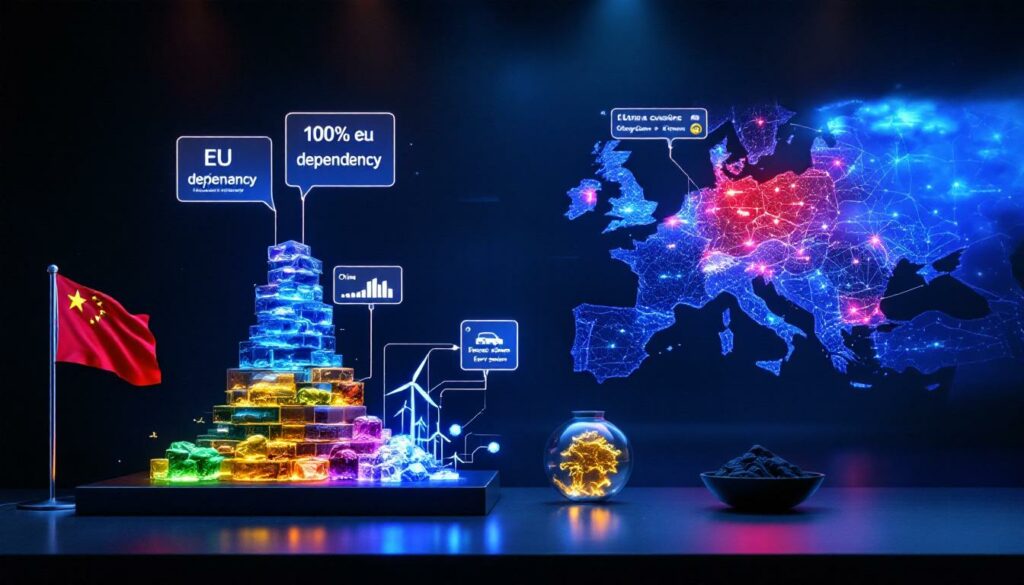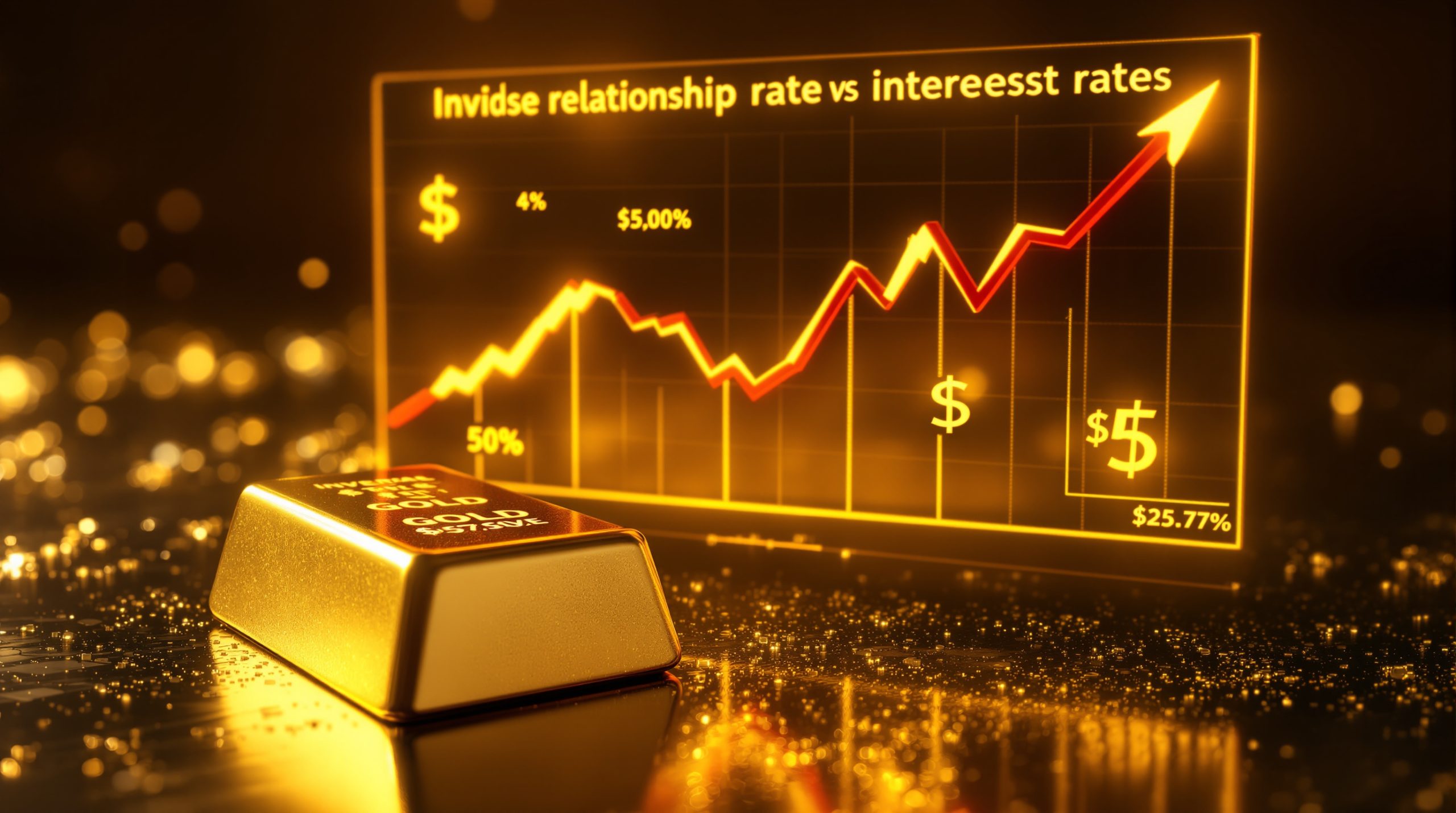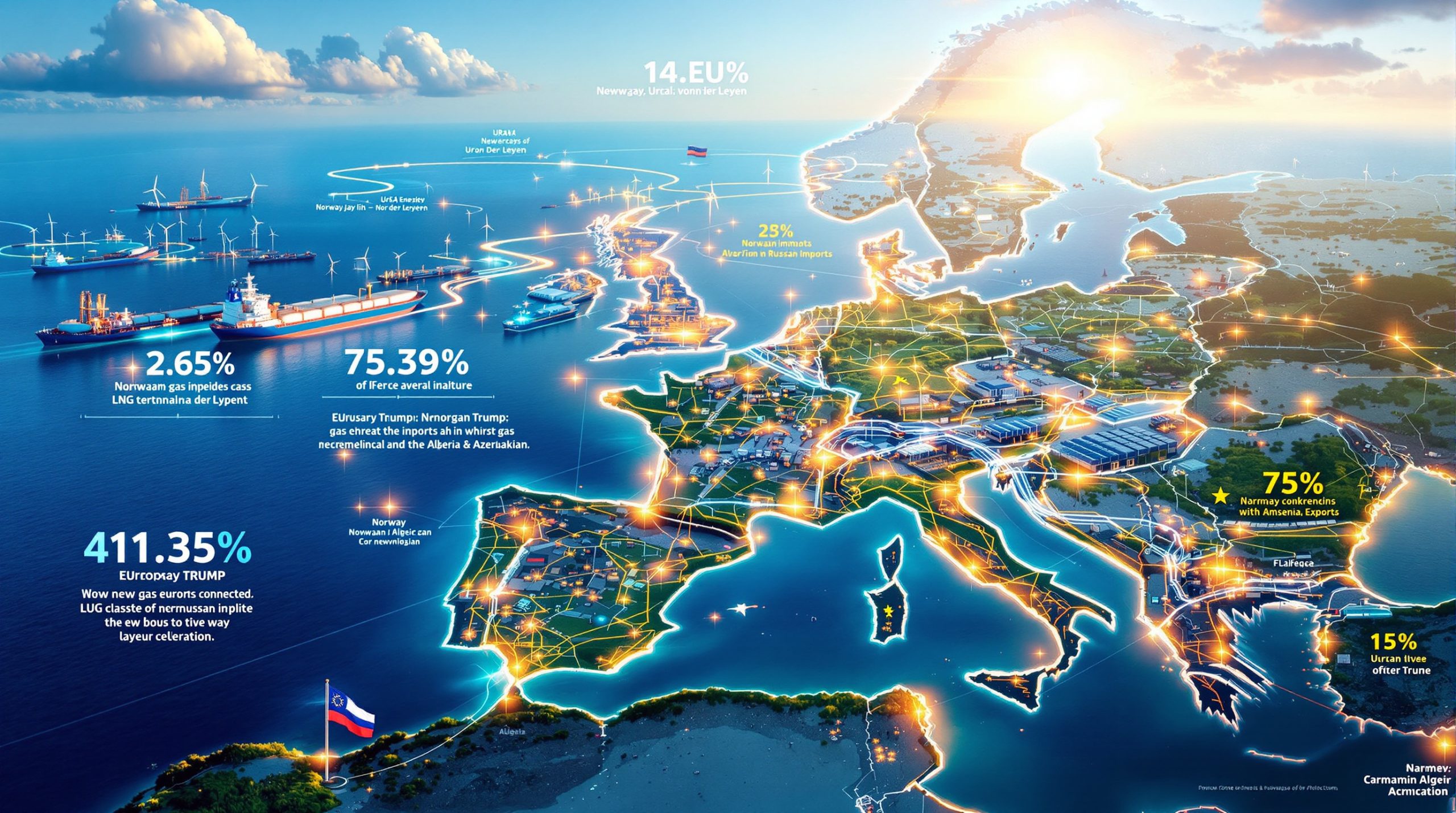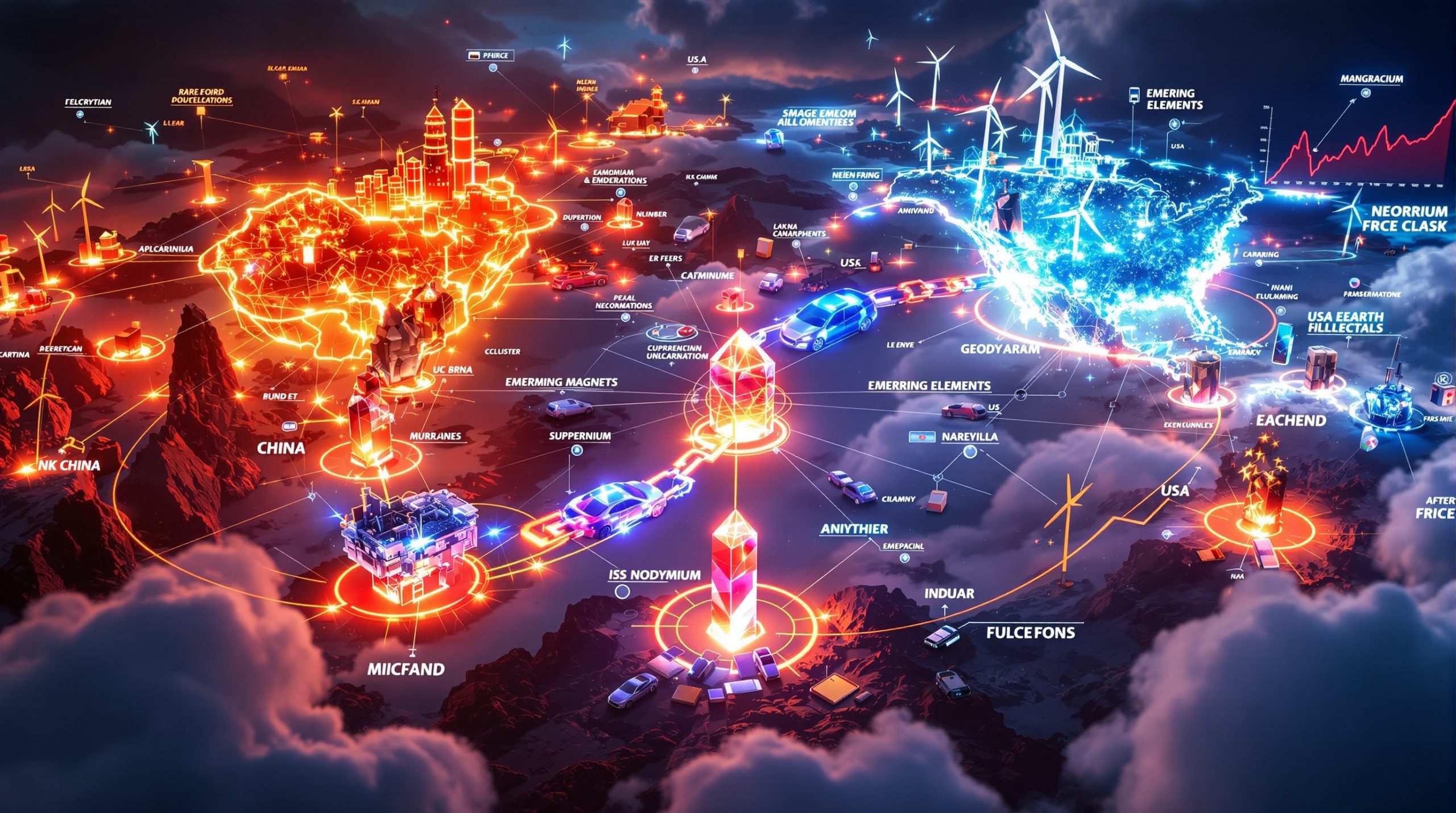How Are China's Rare Earth Export Curbs Affecting EU Relations?
The European Union finds itself in an increasingly precarious position as China tightens its grip on rare earth exports. According to official EU data, Europe imports 100% of its rare earths and 97% of its magnesium from China, creating what European officials characterize as a "strategic chokehold" on critical supply chains.
This dependency has become a focal point of diplomatic tension, particularly as the restrictions come just weeks before the upcoming EU-China summit in mid-2025. The timing has not gone unnoticed by European officials, who view it as a calculated move.
"Europe faces dual coercion: Trump tariff impact and more threateningly, China's strategic chokehold on rare earth exports," states Bart Groothuis, MEP for Renew Europe. "This is not collateral damage from the China-USA dispute, this is intentional to hit Europe."
Dual Pressure Points for European Economy
The European economy currently faces unprecedented pressure from two global superpowers simultaneously. On one side, U.S. tariff policies under the Trump administration create trade barriers for European exports. On the other, Chinese export restrictions threaten to choke supply chains for critical materials essential to European manufacturing and innovation.
This dual pressure extends far beyond simple economic concerns, striking at the heart of Europe's strategic independence. With rare earths essential for green technology, defense systems, and high-tech manufacturing, these restrictions represent potential leverage in broader geopolitical negotiations.
"What we're witnessing is unprecedented in modern European trade relations—simultaneous economic pressure from both East and West, forcing Europe to rapidly rethink its strategic autonomy," notes a senior EU trade official speaking on condition of anonymity.
The restrictions particularly impact European companies already struggling with post-pandemic supply chain disruptions and rising energy costs. Industry analysts warn that prolonged constraints could force painful production adjustments across multiple sectors.
Why Are Rare Earths So Critical to European Industries?
Despite their name, rare earth elements are relatively abundant in the Earth's crust. Their "rarity" stems from the difficulty and environmental impact of extracting and processing them. These 17 elements, including neodymium, dysprosium, and praseodymium, possess unique magnetic, luminescent, and electrochemical properties that make them irreplaceable in modern technology.
Applications in Strategic Sectors
Rare earths serve as the backbone of Europe's most strategic industries. In renewable energy, permanent magnets containing neodymium and dysprosium enable wind turbines to generate electricity efficiently. A single 3-megawatt turbine requires approximately 600 kg of rare earth materials in its permanent magnets.
For electric vehicles—central to Europe's green transition—these elements are equally critical. Each EV contains approximately 1-2 kg of rare earth materials, primarily in motors and battery systems. With European automakers planning to transition to all-electric fleets by 2035, secure access to these materials is non-negotiable.
The defense sector's dependency is perhaps most concerning from a security perspective. Modern weapons systems, from precision-guided munitions to radar systems, rely heavily on rare earth components. For example, an F-35 fighter jet contains approximately 417 kg of rare earth materials across various systems.
Telecommunications infrastructure, including 5G networks, also depends on these materials for everything from signal amplification to data storage. As Europe pushes toward digital transformation, rare earth security becomes increasingly vital.
Economic Implications of Supply Disruption
The potential economic impact of rare earth supply disruptions cascades far beyond direct manufacturing costs. Industry analysts estimate that a 20% reduction in rare earth availability could trigger a 5-8% drop in European high-tech manufacturing output within six months.
Price volatility presents another significant challenge. Following previous export restrictions in 2010-2011, some rare earth prices spiked by 750% before stabilizing. Such volatility makes long-term investment planning extremely difficult for European manufacturers.
Innovation constraints represent a less visible but potentially more damaging long-term effect. Research and development in fields from quantum computing to advanced medical imaging devices requires confidence in material availability. Without it, promising technologies may remain undeveloped.
The downstream effects on European green transition goals could be particularly severe. The European Green Deal's target of carbon neutrality by 2050 depends heavily on technologies that require rare earth reserves analysis. Any significant supply disruption could force a painful reassessment of this timeline.
What Steps Is the EU Taking to Reduce Chinese Dependency?
Faced with this strategic vulnerability, the European Union has begun implementing a comprehensive strategy to reduce dependency on Chinese rare earths. However, experts caution that meaningful independence remains years away.
The Two-Pillar Strategy
"Europe's strategy rests on two pillars: increasing recycling capacity and negotiating deals with other countries to diversify imports, both of which would take time," explains Holger Goerg, director at the Kiel Institute for the World Economy.
The first pillar—recycling—focuses on recovering rare earths from electronic waste, industrial scraps, and end-of-life products. The EU has invested over €500 million in urban mining initiatives since 2022, with promising results. Advanced hydrometallurgical processes can now recover up to 90% of rare earth content from certain electronic components, though scaling remains challenging.
The second pillar involves establishing new supply relationships with alternative source countries. Australia, Canada, Vietnam, and Brazil have emerged as potential partners, with preliminary agreements already in place. The EU-Australia Critical Minerals Partnership, signed in 2023, represents the most advanced of these arrangements.
A cornerstone of these efforts is the European Critical Raw Materials Act, adopted in 2023. This legislation establishes benchmarks for domestic sourcing, recycling, and processing capacities while streamlining permitting procedures for critical mineral projects. It aims to ensure that by 2030, the EU will extract 10% of its annual rare earth consumption from European sources, process 40% within its borders, and recycle at least 25%.
Timeline Challenges
Despite these ambitious plans, analysts project it will take 10-15 years before Europe achieves meaningful independence from Chinese rare earths. This extended timeline reflects several fundamental challenges.
Infrastructure development requirements represent a significant hurdle. Building rare earth processing facilities requires not only substantial capital investment—typically $500-800 million for a medium-scale plant—but also specialized engineering expertise currently concentrated in China.
Technical expertise gaps further complicate the transition. Rare earth separation and refining involve hundreds of complex chemical processes, with techniques often protected as trade secrets. European universities have only recently begun reestablishing programs to train specialists in these fields.
Economic viability concerns also persist for non-Chinese supply chains. Chinese operations benefit from economies of scale, lower environmental compliance costs, and vertical integration. European alternatives must overcome a 15-30% cost disadvantage while maintaining higher environmental and labor standards.
How Did Europe Become So Dependent on Chinese Rare Earths?
Europe's current dependency on Chinese rare earths did not develop overnight but resulted from decades of market shifts, policy decisions, and economic forces.
Historical Development of Market Dominance
In the 1980s, rare earth production was geographically diverse, with significant mining operations in the United States, Australia, and other countries. The Mountain Pass mine in California alone supplied approximately 60% of global demand until the late 1990s.
China's strategic investments in the sector began in the 1970s under Chairman Deng Xiaoping, who famously observed: "The Middle East has oil, China has rare earths." By systematically developing mining operations in Inner Mongolia and processing capabilities nationwide, China established the foundation for market dominance.
Environmental and cost factors accelerated the shift away from Western production. Rare earth processing generates significant toxic and radioactive waste. As environmental regulations tightened in Europe and North America during the 1990s, the cost advantage of Chinese operations—operating under less stringent environmental controls—became decisive.
Western deindustrialization trends further contributed to dependency. As manufacturing shifted eastward, so did material processing capabilities and technical expertise. European companies increasingly outsourced production of components containing rare earths, gradually losing touch with the underlying supply chains.
The Concentration of Processing Expertise
China's dominance extends beyond mining to the critical middle stages of the supply chain. While rare earth ore deposits exist in many countries, the technical knowledge to separate and refine these elements into usable forms is heavily concentrated in Chinese facilities.
Processing rare earths requires hundreds of separation steps using specialized solvents and equipment. China has systematically developed this expertise over decades, creating a technical knowledge gap estimated to take 7-10 years for Western countries to close even with significant investment.
The environmental challenges of rare earth processing further deterred Western investment. A typical rare earth processing facility produces 2,000 tons of toxic waste for every ton of rare earth oxides. Establishing environmentally responsible facilities in Europe requires significantly higher capital expenditure than comparable Chinese operations.
Cost advantages have been maintained through vertical integration of supply chains. Chinese operations typically control every step from mining through processing to manufacturing of components, capturing value at each stage. This integration enables profitability at price points that would be unsustainable for standalone Western operations.
What Are the Geopolitical Implications of Rare Earth Restrictions?
China's rare earth export restrictions represent more than a simple trade measure—they signal a fundamental shift in how economic leverage is deployed in international relations.
Leverage in International Relations
The timing of the export curbs—weeks before the EU-China summit—suggests their potential use as a negotiating tool in broader trade discussions. By demonstrating control over critical minerals energy security, China creates significant leverage that extends beyond rare earths themselves.
"This is not collateral damage from the US‑China trade war impact, this is intentional to hit Europe," asserts MEP Bart Groothuis, reflecting a growing consensus among European officials that the restrictions target EU strategic interests specifically.
The move also appears calculated as a response to European defensive trade measures and tariffs, particularly those related to electric vehicles and solar panels. It demonstrates China's willingness to respond asymmetrically, targeting strategic vulnerabilities rather than matching tariff for tariff.
Perhaps most significantly, the restrictions signal China's increasing comfort with using economic tools for political objectives. Unlike previous trade disputes centered on market access or intellectual property, rare earth restrictions directly impact European strategic autonomy in defense and green technology.
Comparison with Other Trade Tensions
The current situation bears parallels with other strategic resource restrictions, most notably China's 2010 rare earth embargo against Japan following a territorial dispute. That action led to a successful World Trade Organization case against China but also spurred Japan to invest heavily in alternative sources and recycling.
However, significant differences exist from conventional tariff disputes. While tariffs primarily affect price competitiveness, supply restrictions threaten the very ability to manufacture critical products. This elevates the conflict from an economic to a security concern.
The restrictions also integrate with broader "decoupling" trends in the global economy. As major powers increasingly prioritize supply chain security over efficiency, the rare earth dispute represents a leading indicator of potential fragmentation in other critical material markets.
For World Trade Organization frameworks, the restrictions pose a particular challenge. While export restrictions technically violate WTO principles, enforcement mechanisms have proven ineffective at addressing strategic material controls disguised as environmental or conservation measures.
Can Europe Achieve Rare Earth Independence?
The question of whether Europe can truly break free from Chinese rare earth dependency involves assessing both formidable challenges and promising alternatives.
Technical and Economic Hurdles
Europe faces limited domestic mining potential for primary rare earth sources. While deposits exist in Sweden, Finland, and Greenland, they generally involve lower concentrations and more complex geology than Chinese resources. The Norra Kärr deposit in Sweden, one of Europe's most promising, contains approximately 592,000 tons of rare earth oxides but faces permitting challenges and community opposition.
High capital costs for establishing processing facilities present another significant barrier. A full-scale rare earth separation plant capable of meeting just 10% of European demand would require an estimated €1.2-1.5 billion investment, with uncertain returns given Chinese price advantages.
Environmental challenges of rare earth separation and processing remain particularly problematic for Europe's stringent standards. Conventional processing generates substantial toxic waste and requires extensive water usage. Developing cleaner technologies is possible but adds 25-40% to processing costs compared to conventional methods.
Competitive disadvantages against established Chinese operations persist despite policy support. Chinese rare earth producers benefit from decades of experience, economies of scale, and often, direct or indirect government subsidies. This creates a substantial barrier to entry for European competitors.
Promising Alternative Approaches
Despite these challenges, several alternative approaches show promise for reducing dependency.
Urban mining and e-waste recycling represent Europe's most immediate opportunity. The continent generates approximately 12 million tons of electronic waste annually, containing rare earth concentrations often higher than in natural ores. Advanced recycling technologies developed at facilities like the Helmholtz Institute Freiberg can now recover up to 90% of rare earths from magnets, though scaling remains a challenge.
Deep sea mining concerns offer a controversial but potentially significant source. Surveys suggest that seafloor nodules in EU-controlled waters could contain rare earth concentrations 3-5 times higher than terrestrial deposits. However, environmental concerns and technological limitations have thus far prevented commercial development.
Partnerships with Australia, Canada, and other allied nations provide a more immediate path to diversification. The EU-Canada Strategic Partnership on Raw Materials, signed in 2024, aims to integrate Canadian mining capabilities with European processing expertise. Similar arrangements with Australia focus on developing joint processing facilities.
Investment in material science for alternatives and substitutes may ultimately provide the most sustainable solution. Research at the European Institute for Material Substitution has made significant progress in developing motors that require 50% less neodymium while maintaining performance, though commercialization remains several years away.
What Should European Businesses Do While Awaiting Policy Solutions?
While geopolitical negotiations and supply chain restructuring unfold at the macro level, European businesses face immediate challenges requiring practical solutions.
Short-Term Adaptation Strategies
Stockpiling critical materials where financially feasible represents the most immediate response. Industry consultants recommend maintaining a 6-9 month buffer stock of critical rare earths, though price volatility and storage requirements make this challenging for smaller firms.
Developing contingency plans for supply disruptions has become essential across industries. Major European manufacturers have established material risk committees to monitor vulnerabilities and develop alternative sourcing strategies for critical components.
Exploring material substitution where technically possible offers another pathway. For some applications, reduced rare earth content or alternative designs can mitigate dependency. BMW, for instance, has developed electric motors using 40% less dysprosium through innovative design changes.
Diversifying supplier relationships beyond primary Chinese sources—even while remaining within the Chinese ecosystem—can reduce vulnerability to specific export restrictions. Working with Chinese suppliers who have established operations in Vietnam, Malaysia, or Thailand provides some risk mitigation.
Long-Term Resilience Building
Investment in recycling technologies and circular economy approaches offers perhaps the most promising long-term strategy for European businesses. Companies like Solvay and Umicore have pioneered rare earth recovery processes that can now process industrial magnets and catalysts with high efficiency, creating closed-loop systems.
Research partnerships for material efficiency and substitution enable even smaller firms to participate in solutions. The European Raw Materials Alliance connects over 400 companies in collaborative research initiatives focused on reducing dependency through design innovation and material science.
Vertical integration strategies for critical supply chains help secure access even during market disruptions. Several European automotive manufacturers have established direct investments in rare earth processing to guarantee supply for their EV production.
Industry consortiums for shared infrastructure development spread risk and capital requirements. The European Battery Alliance model, which successfully established European battery production capability, is now being replicated for rare earth processing through the European Raw Materials Alliance, with initial projects under construction in Finland and Estonia.
"European companies have a narrow window to act before supply chain vulnerabilities become competitive disadvantages," warns a recent European Commission advisory on critical materials. "Those who establish resilience now will have a decisive advantage in the coming decade."
China's Rare Earth Export Restrictions: FAQ
What exactly are rare earth elements and why are they important?
Rare earth elements comprise 17 metallic elements essential for manufacturing high-tech products including magnets, catalysts, batteries, and electronic components. Despite their name, most are relatively abundant in Earth's crust but rarely found in concentrated, economically viable deposits. Their unique magnetic, optical, and electrochemical properties make them irreplaceable in technologies ranging from smartphones to wind turbines to military systems.
How much of the global rare earth supply does China control?
China controls approximately 60% of global rare earth mining production and over 85% of processing capacity, giving it unprecedented control over these critical materials' global supply chains. This dominance extends beyond raw materials to technical expertise, processing equipment, and downstream manufacturing, creating multiple layers of dependency for European industries.
Are there viable alternative sources outside China?
Yes, countries including Australia, the United States, Myanmar, and Vietnam have rare earth deposits, but they lack China's processing infrastructure and economies of scale, making immediate substitution challenging. European projects in Greenland and Sweden show promise but remain years from full production. Recycling technologies have advanced significantly but currently recover less than 1% of Europe's annual rare earth consumption.
How do rare earth restrictions impact green technology development?
Restrictions could significantly slow Europe's
Want to Capitalise on the Next Mineral Discovery?
Discovery Alert's proprietary Discovery IQ model provides instant notifications when significant ASX mineral discoveries are announced, helping you identify actionable opportunities before the broader market. Visit our discoveries page to understand how major mineral discoveries can lead to exceptional investment returns and position yourself for success.




